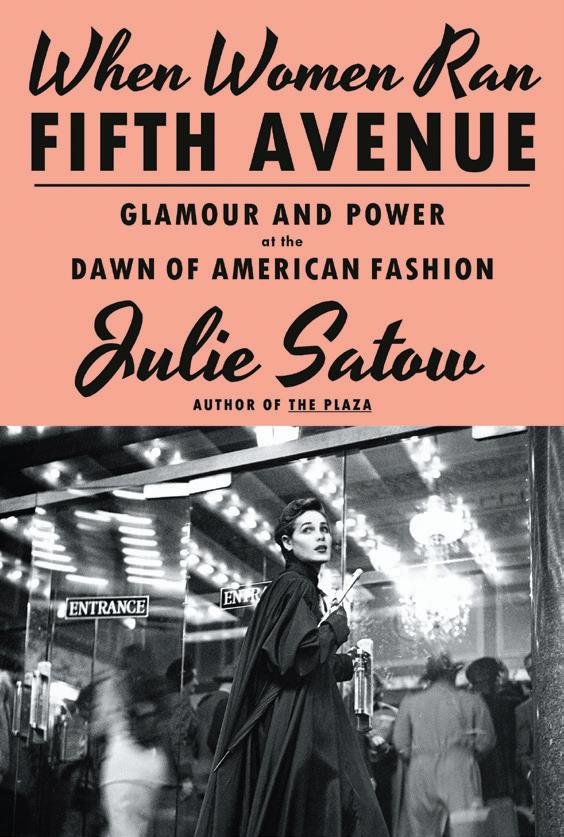
3 minute read
Women in charge
A Jewish Book Festival book being presented and discussed Jan. 29
By Carole J Greene
The arena of retail sales, especially of women’s clothing and accessories, was almost entirely a man’s world until three extraordinary women appeared on the scene, starting in the 1930s. Each woman, in her own visionary way, altered, enhanced or rescued New York City department stores when their male predecessors could not. Their exploits are the subject of the Jewish Book Festival’s presentation on Jan. 29, 1 p.m. at the Nina Iser Jewish Cultural Center.
Growing up, I discovered that I lacked the shopping gene that other women in my family possessed in abundance. While my mother and sister frequented the various clothing retailers so often they knew all the clerks’ names, I had to be shamed to update my wardrobe when they were tired of looking at me in the same old — and sometimes shabby — clothes. Eventually, I married and felt an obligation to look as good as possible so I would not embarrass my husband in his professional pursuits. Thus, I caught on to the joys of sporting the latest fashions.
We lived in a small Midwestern town that did not immediately grasp the styles of the day. By the time a trend got to us, it had long been passé in the halls of fashion. That’s when my husband took me to New York twice a year, starting in 1976, to dress me appropriately. And that is when I discovered Lord & Taylor, Bonwit Teller and Henri Bendel.
I discovered them anew as I delved into journalist Julie Satow’s marvelous book, “When Women Ran Fifth Avenue.” This delightful 2024 book details, as the subtitle says, “Glamour and Power at the Dawn of American Fashion.” The author chose to enlighten her readers through the life stories — from the 1930s and continuing through the 1980s — of three women who embodied both the title and the subtitle: Dorothy Shaver (Lord & Taylor), Hortense Odlum (Bonwit Teller) and Geraldine Stutz (Henri Bendel). These women understood shoppers like me and developed innovative ways to attract them to their stores.
Satow’s meticulous research acquainted her with each of these trailblazing women, who stepped into men’s shoes where women were not common — and, often, not welcome — in high fashion circles. She reveals to her readers the remarkable insights these women brought to their executive positions as well as personal reactions to their successes and, likewise, missed hits. While revealing how these women functioned, Satow also explores where they fit into the history of women’s fashion, and of retailing itself. We are able to see the immense changes in retail sales from the late 19th century to the 1980s through the lens of each woman’s personal journey.
Making the book more enjoyable is the compassion Satow brings to her descriptions of these women’s efforts. Yes, the journalist side of her requires that she deliver factual portrayals of what happened, and she does. But the caring side of her makes us feel that she developed a kinship — that these women became like sisters, deserving of respect, honor and even love. I salute Satow for sharing her insights into the lives of the women who made “Fifth Avenue” a shorthand word for fashion.








